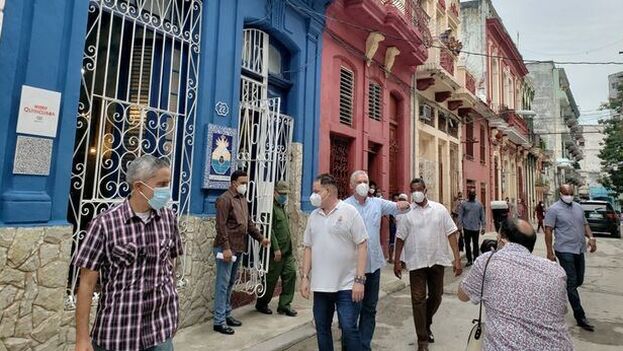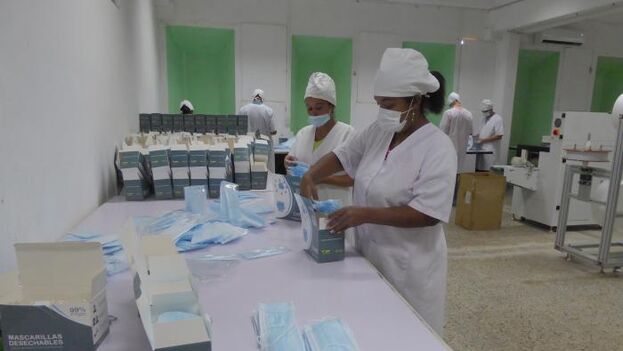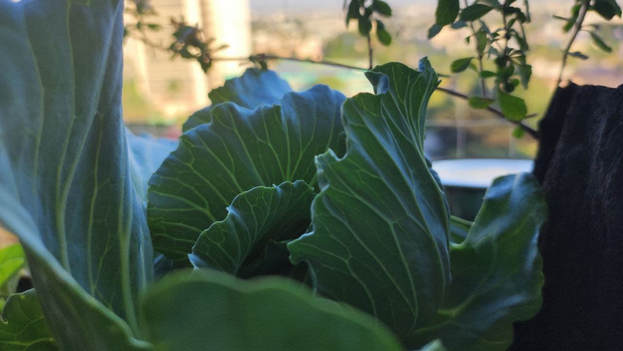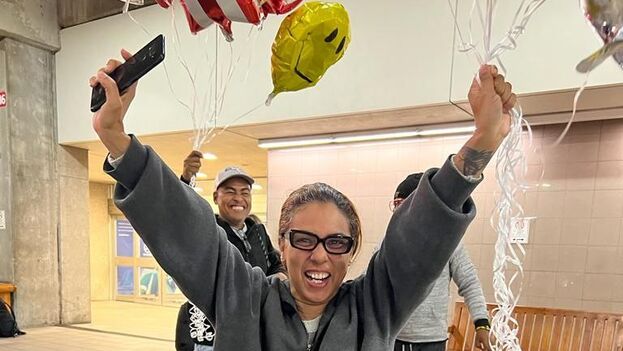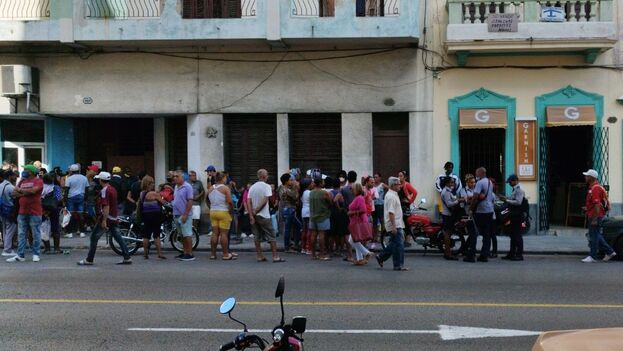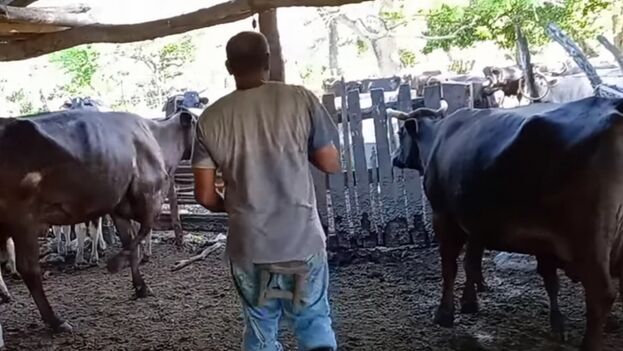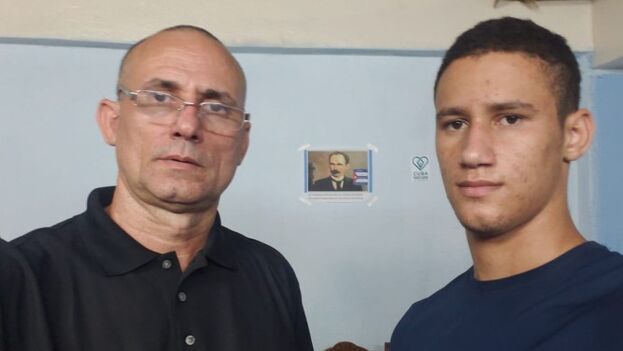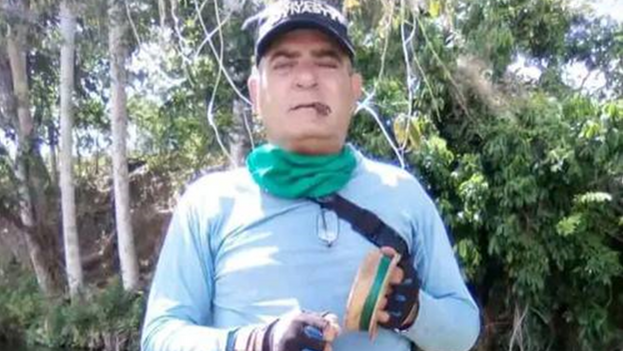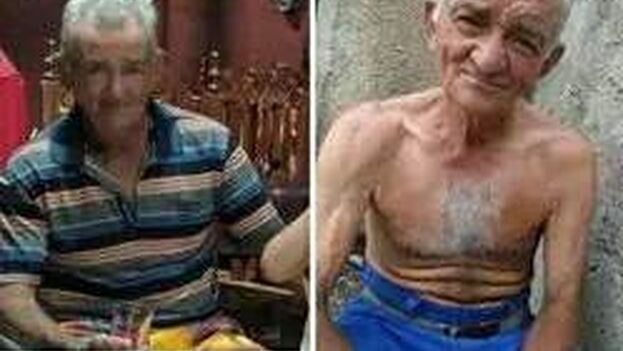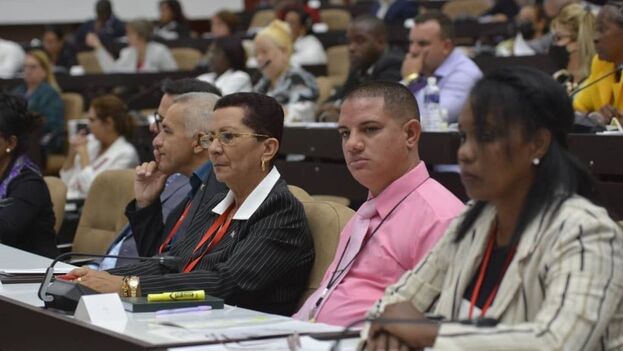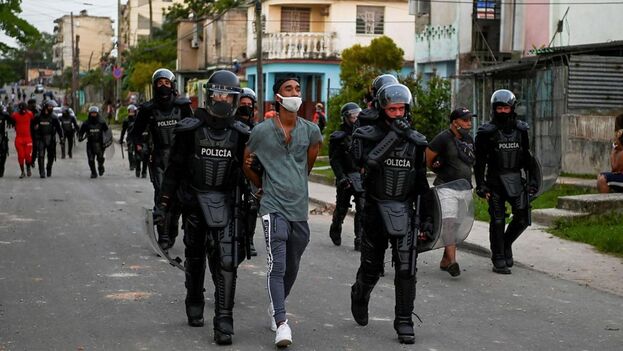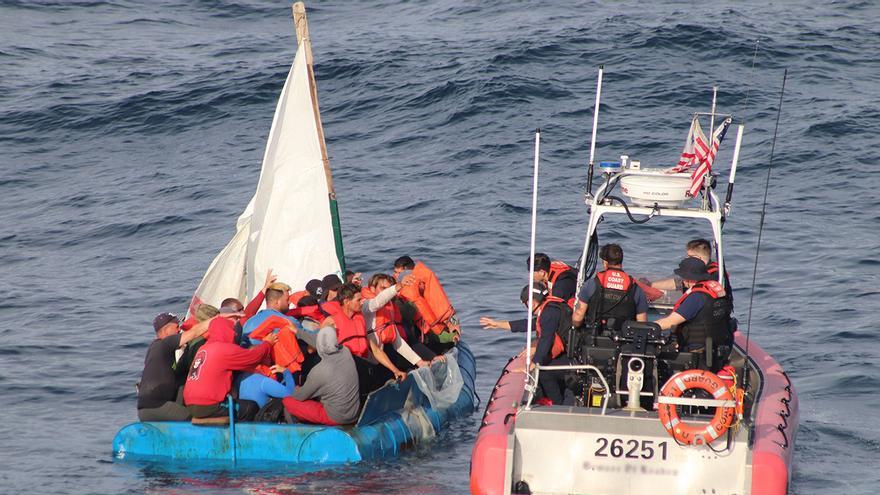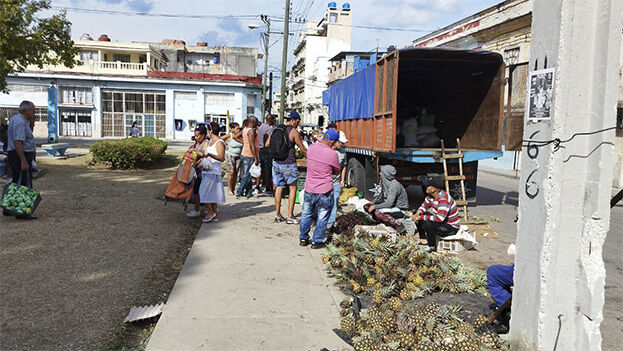In the communist and assembly conclaves that are usually held at this time of the year, economic information that cannot be known by the official bodies responsible for its dissemination is usually leaked by the minister of economy. This year, for example, it has been known in the economic affairs committee of the National Assembly, that the communists believe they can gradually resolve the situation of the country by betting on macroeconomic stabilization, with aspects such as monetary balance, the currency exchange market, prices and the tax system.
And here comes the surprise. Let no one expect a manual on the use of instruments and economic policy objectives. According to Díaz-Canel, the economy can only be stabilized if the concept of creative resistance is channelled and enhanced in all activities, which is splitting hairs, because now he will say that macroeconomic stabilization has to do with the capacity of the people, not only to resist, but to innovate, create and move forward. Not even the example of COVID-19 serves, since Cuba at the end of 2022 is one of the few countries in the world that has not yet recovered the levels of activity prior to the pandemic. So much for creative resistance; Cubans are poorer today than three years ago. continue reading
So forgetting what happened this year, the economic affairs committee said that the projections of the Ministry of Economy and Planning for 2023 are better, which does not coincide with the latest Economic Commission for Latin America (ECLAC) forecast that lowers growth in 2022, and foresees growth from 2% to 1.8% in 2023. Someone is not right.
Díaz-Canel later stated that the two main problems he identifies in the economy, inflation and a low supply of national currency, can be overcome with creative resistance. But at the same time he announced “a path that brings sacrifices,” which implies for the Cuban people more uncertainty and economic unrest than there is currently. A disgrace.
And at this point an analysis was carried out that, it’s hard to believe, defied the regime. According to Díaz-Canel, there are some companies that raised prices “against the purchasing power of the population, after moving from an environment of 1×1 to 1×24, while others have increased expenses without raising prices, due to a political commitment.” How curious. Companies that raise prices do so against the population. Those who do not, assume a “commitment” to the people and of course, that, according to Díaz-Canel, “causes losses in their labour force, which has no incentive for profits.” Is that creative resistance or are we talking about something else?
Does the Cuban communist leader really believe that the Marxist-Leninist economy that he directs puts forward this type of behavior? Are companies that raise prices bad? Are those who don’t do it good? How far does the political commitment to those companies go? And how far does creative endurance go?
Along with this simple business scenario of good and bad, which Cuban communism likes to create, it is pointed out that there is “an excess of liquidity, but concentrated in few hands. For example, there are state-owned companies that, just because of the 1×24 exchange, generated high levels of profit.” Magic or simply manipulation of information? Where is the monetary policy that fulfills its functions? What would Mrs. Wilson do?*
The truth is that the exchange rate of the ordering task** for monetary unification was what caused more than half of the socialist state companies to go into bankruptcy and experience losses, a situation that many have not managed to reverse. Yes. Those who were “good” and did not raise prices ended up entering a crisis. Creative resistance didn’t work here either.
Díaz-Canel also said that even when there are expensive things (minimizing a problem that affects most goods and services) “a group of people can buy them because certain sectors accumulate money asymmetrically.” And he asked: “How do you solve this?” The communist leader’s recipe is clear: “producing more so that there is more supply, but currency is needed for the purchase of inputs.” And then, why are those inputs not produced nationally by Cuban companies? They do not need to be state companies; they can be private or associated with an international investor. Doesn’t Díaz-Canel realize that the solution to the problem is to change what he just defended? Why isn’t creative resistance used here?
He recognized in his analysis that “the people most affected are in the budgeted sector and among retirees and pensioners,” and this is true, because inflation hits the most vulnerable sectors the hardest, for which government spending cannot be stretched further. There is no margin.
Unfortunately, the estimated figures for the closure of the 2022 plan and the one planned for 2023, as well as the progress of the provisions approved to address the crisis, remained for the next plenary session of the Assembly, so we will have to be attentive to them. They won’t be good.
In the agri-food commission there was also an opportunity to assess the concept of creative resistance. The result of the verification of the Acopio System of Companies*** was evaluated. The report explained that “among the main causes of losses, the non-compliance with the hiring that supports the economy plan, inefficiencies in marketing, high financial expenses with interest, the inefficient management of collections and payments, and the delay in the application of the labour availability process stand out. The eternal situation of lack of control and disorganization contrasts with the iron ideological intervention of the economy. Creative resistance still doesn’t work.
The balance of the agricultural sector is regrettable. Cuba has to prepare for a bad, a very bad, year. The report highlighted the breach of contracts by suppliers, with losses of more than 38,000 tons of agricultural products, representing about 32 million pesos. No one cited the real reasons for these breaches, forced by the demotivation caused by trade debt, prices and lack of inputs, among other things. To this is added the chain of defaults, which at certification amounted to 604 million pesos in accounts receivable and payable.
At this point, the Minister of Agriculture, the main person responsible for this chaos, blamed Acopio “for not having taken enough advantage of Decree-Law 35, which aims to create flexibility in the marketing of products,” as if Acopio had nothing to do with the regime. Not content with transferring his management responsibilities to others, the minister “proposed that not only the Acopio System of Companies but also all the institutions are related to the process.”
He also warned that the Law of Promotion and Development of the Livestock Project, which will be fully debated in the coming days, “will not recover the sector on its own but with what the agencies and workers involved in this sector are able to implement.” In all these cases, you will see if creative resistance is of any use.
With regard to the sugar industry, “the importance in this sector of the collectives working organically with bosses who have extensive knowledge would directly benefit the socialist state enterprise.”
The next sugar campaign, defined as a “short harvest” by the president of Azcuba, “will guarantee domestic consumption with fewer sugar mills, with the purpose of gradually rescuing sugar production.” In reality, the state of the sugar sector after the restructuring decided by Fidel Castro at the beginning of the century is so regrettable that its resurrection is very complicated.
The improvement in the economy that the leaders foresee will happen because “the plan focuses on a new business model, in which there is financial planning, not only in sugar production, but also in the circular economy in a prioritized way, as well as in the model of science and innovation.”
Is this the path for Cuban sugar? The regime is simplifying a sector of great possibilities as an engine of the economy, betting on an “objective, flexible and although small harvest, with good practices, concentrating resources on fewer sugar mills to achieve greater efficiency.” From here the path to Insignificance is short. Creative resistance, in sugar? What for?
Then the service commission analyzed the passenger transport activity, which has presented results very far from those needed in the last three years.
Recognizing that the sector functioned in 2022 below the 2019 levels, the minister of transport pointed out that among the priorities for 2023, “there are measures that act on the objective problems with greater control and rigor; working with the Ministry of Economy and Planning to continue recovering the availability of freely convertible currency and to begin gradually recovering transport in the country.”
He also asked, together with the Ministry of Finance and Prices, to “advance in the ordering of prices, a task that must be completed before the beginning of 2023, and another action is to work better with human resources and cadres.” All of them are very important and outstanding measures to improve transport, of course, with the necessary creative resistance.
The serious situation of passenger transport and especially merchandise led Marrero to intervene at this point to emphasize that this sector “does not escape the situation of transit in the country, with the characteristic of being cross-sectional to all processes,” and referred to “the difficulties in the acquisition of materials such as fuel, tires and batteries for foreign exchange, and the need to look for alternatives. Creative resistance won’t reach this far.
In the same committee, the Minister of Internal Trade listed what he defined as “main trends that have an impact on the current behavior of the phenomena of corruption and illegalities.”
Among these trends he cited, “the theft of volumes of high-demand resources in wholesale and retail supply chains,” “the lack of demand in the protection and control of material, human and financial resources, by administrative structures,” and the “breaking of marketing standards, in a scenario of diversification of state and non-state economic actors, which generate negative criteria for the population.” Of course, creative resistance worked here as a means of facing the legal and control framework that regulates communist trade. For this it was worth Díaz Canel’s coined concept.
But the communists don’t give up, and at this point, the governor of Havana reported the work that is being carried out in the capital “to face the processes of corruption and illegalities, among them, in gastronomy and commerce, in addition to the collections and payments outside the terms established in the contract,” without wanting to recognize that this alleged corruption and the illegalities have their origin In the regulatory complexity of the model and the limited space that is granted to private activity.
Marrero said that “the confrontation with crime and illegality is a complaint of the population,” which is not entirely true, seeing the protests that occur when a merchant is penalized or a business closed and the merchandise confiscated. He added that “the fact that these demonstrations exist is intolerable,” while “the measures taken go against the harm done, no matter who the actor is who is charged. It’s a task that requires the participation of all to achieve sustainable control over time and, as a result, that the available resources reach their final destination.” And with that, you can end up eliminating that creative resistance.
Translator’s Notes:
*Mrs. Wilson was married to a British spy. Her life is featured in a BBC series.
**The “Ordering Task” is a collection of measures that include eliminating the Cuban Convertible Peso (CUC), leaving the Cuban peso as the only national currency, raising prices, raising salaries (but not as much as prices), opening stores that take payment only in hard currency which must be in the form of specially issued pre-paid debit cards, and a broad range of other measures targeted to different elements of the Cuban economy.
***Acopio is the Cuban state collection and distribution agency. It is a highly centralized entity intended to collect and distribute all agricultural production.
Translated by Regina Anavy
____________
COLLABORATE WITH OUR WORK: The 14ymedio team is committed to practicing serious journalism that reflects Cuba’s reality in all its depth. Thank you for joining us on this long journey. We invite you to continue supporting us by becoming a member of 14ymedio now. Together we can continue transforming journalism in Cuba.
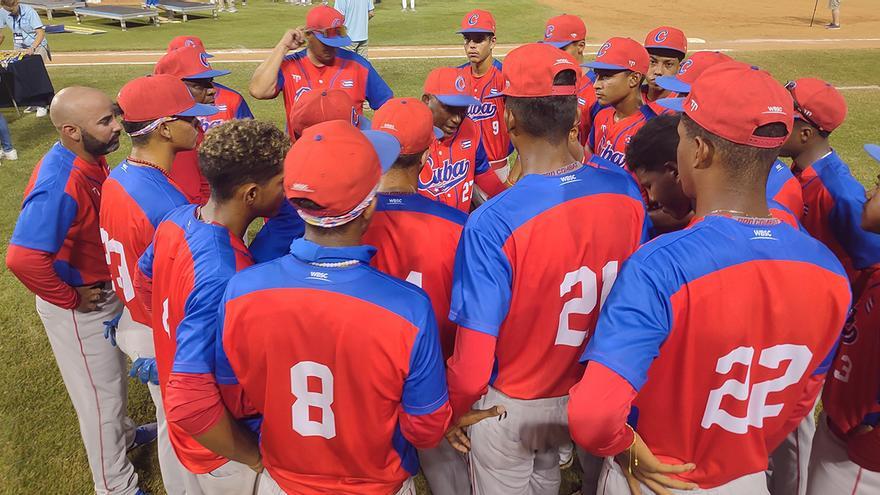
![]() EFE (via 14ymedio), Havana, 26 December 2022 — Cuba has received a permit from the United States that will allow it to include baseball players who play in the Major Leagues (MLB) in the national team that will participate in the Fifth World Classic.
EFE (via 14ymedio), Havana, 26 December 2022 — Cuba has received a permit from the United States that will allow it to include baseball players who play in the Major Leagues (MLB) in the national team that will participate in the Fifth World Classic.
